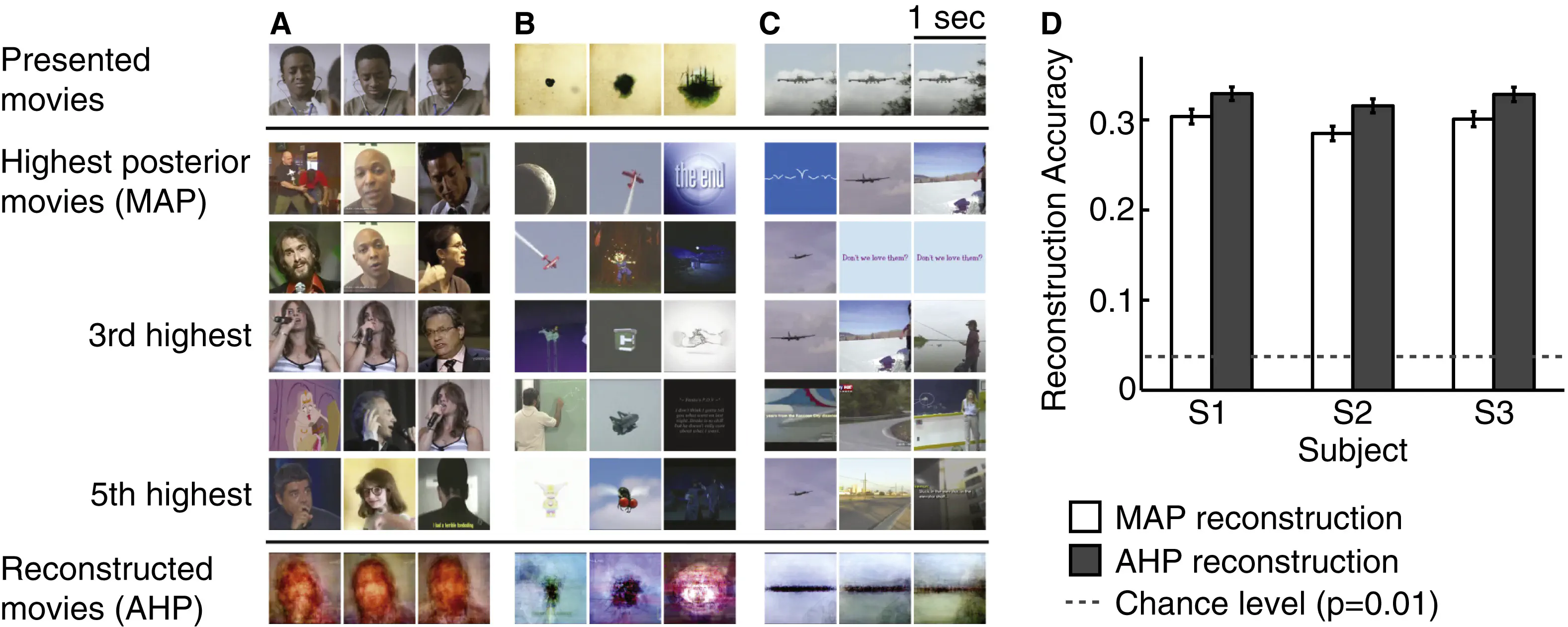Brain Decoding

Brain decoding techniques offer a novel approach to accessing and interpreting the mental processes of perception and cognition. These methods allow researchers to decode the complex mental processes without the need for individuals to verbally articulate their thoughts, thus often referred to as “neural mind reading.”
The approach involves decoding and reconstructing cognitive information from patterns of brain activity recorded through neuroimaging methods such as fMRI, EEG, MEG, or single-neuron recordings. Various decoding models have been proposed, capable of identifying not only low-level perceptual features, such as the visual orientation perceived by an individual, but also more complex stimuli, including objects, scenes, or even continuous streams of dynamic visual stimuli, such as movies. Excitedly, recent progress in AI has introduced further advanced decoders that translate brain activity into continous texts or visual images, accurately capturing semantic details.
While acknowledging the limitations and potential for misuse, brain decoding techniques offer substantial promise for practical applications, notably in developing advanced brain-computer interfaces and assistive technologies for those with disabilities. This reverse engineering strategy also offers neuroscientists a valuable means to explore the brain’s complex cognitive mechanisms more intuitively. By decoding neural representations related to specific cognitive activities, researchers can shed light on the mechanisms by which the brain encodes and integrates information, thereby advancing our understanding of the neural bases supporting complex cognitive operations like perception, attention, and others.
Image from Nishimoto et al., Current Biology, 2011